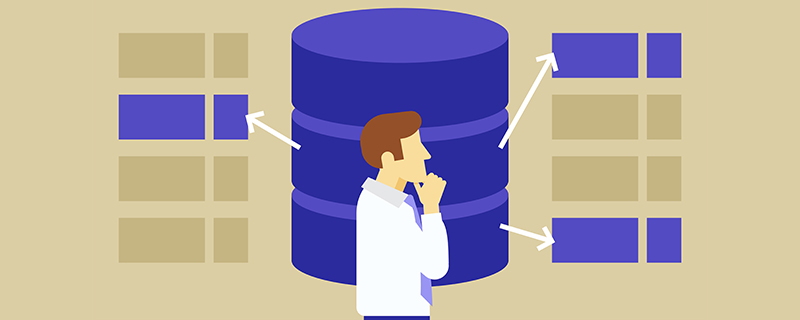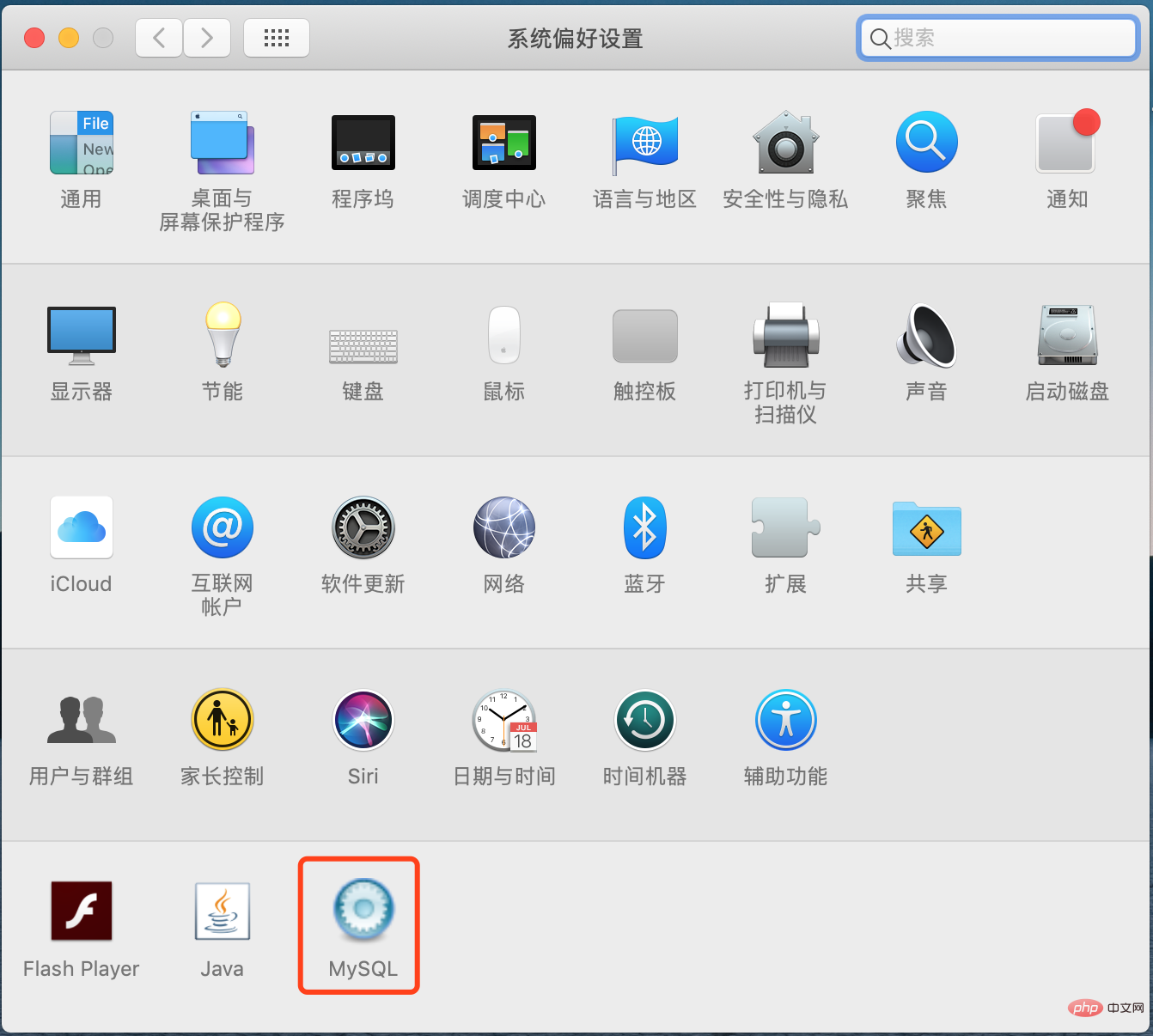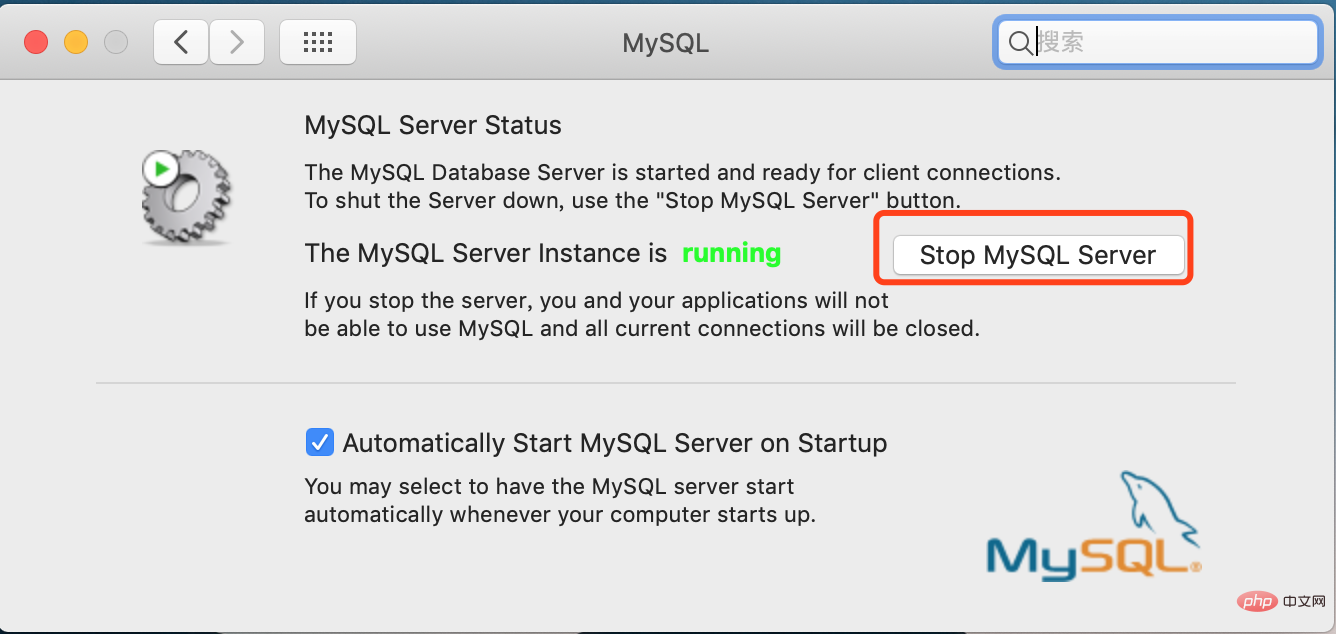mac mysql乱码的解决办法:1、找到并打开my.cnf文件;2、添加代码为“character-set-server=utf8 init_connect='SET NAMES utf8...”即可。

本文操作环境:macOS10.15系统、Mysql5.7.26版、macbook pro 2020电脑。
mac mysql 乱码怎么办?
mac下MySQL出现乱码的解决方法
本文说下mac下的处理,其实处理方式是一样的,我电脑的mysql版本是5.7.26-log
网上很多帖子都说去/usr/local/mysql/support-files目录拷贝my-default.cnf到/etc/my.cnf 然后和linux的修改方式就一样了,这里说明下:Mac版MySQL在5.7.18之后在my-default.cnf就取消了,于是找不到my-default.cnf也找不到my.cnf,my-default.cnf是之前的版本中才有的文件。
假如不幸你的mysql版本恰好是5.7.18之后的,那么直接新建即可
cd /etc sudo vim my.cnf
拷贝以下代码到my.cnf中
# Example MySQL config file for medium systems. # # This is for a system with little memory (32M - 64M) where MySQL plays # an important part, or systems up to 128M where MySQL is used together with # other programs (such as a web server) # # MySQL programs look for option files in a set of # locations which depend on the deployment platform. # You can copy this option file to one of those # locations. For information about these locations, see: # http://dev.mysql.com/doc/mysql/en/option-files.html # # In this file, you can use all long options that a program supports. # If you want to know which options a program supports, run the program # with the "--help" option. # The following options will be passed to all MySQL clients [client] default-character-set=utf8 #password = your_password port = 3306 socket = /tmp/mysql.sock # Here follows entries for some specific programs # The MySQL server [mysqld] character-set-server=utf8 init_connect='SET NAMES utf8 port = 3306 socket = /tmp/mysql.sock skip-external-locking key_buffer_size = 16M max_allowed_packet = 1M table_open_cache = 64 sort_buffer_size = 512K net_buffer_length = 8K read_buffer_size = 256K read_rnd_buffer_size = 512K myisam_sort_buffer_size = 8M character-set-server=utf8 init_connect='SET NAMES utf8' # Don't listen on a TCP/IP port at all. This can be a security enhancement, # if all processes that need to connect to mysqld run on the same host. # All interaction with mysqld must be made via Unix sockets or named pipes. # Note that using this option without enabling named pipes on Windows # (via the "enable-named-pipe" option) will render mysqld useless! # #skip-networking # Replication Master Server (default) # binary logging is required for replication log-bin=mysql-bin # binary logging format - mixed recommended binlog_format=mixed # required unique id between 1 and 2^32 - 1 # defaults to 1 if master-host is not set # but will not function as a master if omitted server-id = 1 # Replication Slave (comment out master section to use this) # # To configure this host as a replication slave, you can choose between # two methods : # # 1) Use the CHANGE MASTER TO command (fully described in our manual) - # the syntax is: # # CHANGE MASTER TO MASTER_HOST=<host>, MASTER_PORT=<port>, # MASTER_USER=<user>, MASTER_PASSWORD=<password> ; # # where you replace <host>, <user>, <password> by quoted strings and # <port> by the master's port number (3306 by default). # # Example: # # CHANGE MASTER TO MASTER_HOST='125.564.12.1', MASTER_PORT=3306, # MASTER_USER='joe', MASTER_PASSWORD='secret'; # # OR # # 2) Set the variables below. However, in case you choose this method, then # start replication for the first time (even unsuccessfully, for example # if you mistyped the password in master-password and the slave fails to # connect), the slave will create a master.info file, and any later # change in this file to the variables' values below will be ignored and # overridden by the content of the master.info file, unless you shutdown # the slave server, delete master.info and restart the slaver server. # For that reason, you may want to leave the lines below untouched # (commented) and instead use CHANGE MASTER TO (see above) # # required unique id between 2 and 2^32 - 1 # (and different from the master) # defaults to 2 if master-host is set # but will not function as a slave if omitted #server-id = 2 # # The replication master for this slave - required #master-host = <hostname> # # The username the slave will use for authentication when connecting # to the master - required #master-user = <username> # # The password the slave will authenticate with when connecting to # the master - required #master-password = <password> # # The port the master is listening on. # optional - defaults to 3306 #master-port = <port> # # binary logging - not required for slaves, but recommended #log-bin=mysql-bin # Uncomment the following if you are using InnoDB tables #innodb_data_home_dir = /usr/local/mysql/data #innodb_data_file_path = ibdata1:10M:autoextend #innodb_log_group_home_dir = /usr/local/mysql/data # You can set .._buffer_pool_size up to 50 - 80 % # of RAM but beware of setting memory usage too high #innodb_buffer_pool_size = 16M #innodb_additional_mem_pool_size = 2M # Set .._log_file_size to 25 % of buffer pool size #innodb_log_file_size = 5M #innodb_log_buffer_size = 8M #innodb_flush_log_at_trx_commit = 1 #innodb_lock_wait_timeout = 50 [mysqldump] quick max_allowed_packet = 16M [mysql] no-auto-rehash # Remove the next comment character if you are not familiar with SQL #safe-updates default-character-set=utf8 [myisamchk] key_buffer_size = 20M sort_buffer_size = 20M read_buffer = 2M write_buffer = 2M [mysqlhotcopy] interactive-timeout
最后一步重启下mysql服务即可


推荐学习:《mysql视频教程》
以上是mac mysql 乱码怎么办的详细内容。更多信息请关注PHP中文网其他相关文章!
 在MySQL中使用视图的局限性是什么?May 14, 2025 am 12:10 AM
在MySQL中使用视图的局限性是什么?May 14, 2025 am 12:10 AMmysqlviewshavelimitations:1)他们不使用Supportallsqloperations,限制DatamanipulationThroughViewSwithJoinSorsubqueries.2)他们canimpactperformance,尤其是withcomplexcomplexclexeriesorlargedatasets.3)
 确保您的MySQL数据库:添加用户并授予特权May 14, 2025 am 12:09 AM
确保您的MySQL数据库:添加用户并授予特权May 14, 2025 am 12:09 AMporthusermanagementInmysqliscialforenhancingsEcurityAndsingsmenting效率databaseoperation.1)usecReateusertoAddusers,指定connectionsourcewith@'localhost'or@'%'。
 哪些因素会影响我可以在MySQL中使用的触发器数量?May 14, 2025 am 12:08 AM
哪些因素会影响我可以在MySQL中使用的触发器数量?May 14, 2025 am 12:08 AMmysqldoes notimposeahardlimitontriggers,butacticalfactorsdeterminetheireffactective:1)serverConfiguration impactactStriggerGermanagement; 2)复杂的TriggerSincreaseSySystemsystem load; 3)largertablesslowtriggerperfermance; 4)highConconcConcrencerCancancancancanceTigrignecentign; 5); 5)
 mysql:存储斑点安全吗?May 14, 2025 am 12:07 AM
mysql:存储斑点安全吗?May 14, 2025 am 12:07 AMYes,it'ssafetostoreBLOBdatainMySQL,butconsiderthesefactors:1)StorageSpace:BLOBscanconsumesignificantspace,potentiallyincreasingcostsandslowingperformance.2)Performance:LargerrowsizesduetoBLOBsmayslowdownqueries.3)BackupandRecovery:Theseprocessescanbe
 mySQL:通过PHP Web界面添加用户May 14, 2025 am 12:04 AM
mySQL:通过PHP Web界面添加用户May 14, 2025 am 12:04 AM通过PHP网页界面添加MySQL用户可以使用MySQLi扩展。步骤如下:1.连接MySQL数据库,使用MySQLi扩展。2.创建用户,使用CREATEUSER语句,并使用PASSWORD()函数加密密码。3.防止SQL注入,使用mysqli_real_escape_string()函数处理用户输入。4.为新用户分配权限,使用GRANT语句。
 mysql:blob和其他无-SQL存储,有什么区别?May 13, 2025 am 12:14 AM
mysql:blob和其他无-SQL存储,有什么区别?May 13, 2025 am 12:14 AMmysql'sblobissuitableForStoringBinaryDataWithInareLationalDatabase,而alenosqloptionslikemongodb,redis和calablesolutionsoluntionsoluntionsoluntionsolundortionsolunsolunsstructureddata.blobobobsimplobissimplobisslowderperformandperformanceperformancewithlararengelitiate;
 mySQL添加用户:语法,选项和安全性最佳实践May 13, 2025 am 12:12 AM
mySQL添加用户:语法,选项和安全性最佳实践May 13, 2025 am 12:12 AMtoaddauserinmysql,使用:createUser'username'@'host'Indessify'password'; there'showtodoitsecurely:1)choosethehostcarecarefullytocon trolaccess.2)setResourcelimitswithoptionslikemax_queries_per_hour.3)usestrong,iniquepasswords.4)Enforcessl/tlsconnectionswith
 MySQL:如何避免字符串数据类型常见错误?May 13, 2025 am 12:09 AM
MySQL:如何避免字符串数据类型常见错误?May 13, 2025 am 12:09 AMtoAvoidCommonMistakeswithStringDatatatPesInMysQl,CloseStringTypenuances,chosethirtightType,andManageEngencodingAndCollationsEttingsefectery.1)usecharforfixed lengengters lengengtings,varchar forbariaible lengength,varchariable length,andtext/blobforlabforlargerdata.2 seterters seterters seterters seterters


热AI工具

Undresser.AI Undress
人工智能驱动的应用程序,用于创建逼真的裸体照片

AI Clothes Remover
用于从照片中去除衣服的在线人工智能工具。

Undress AI Tool
免费脱衣服图片

Clothoff.io
AI脱衣机

Video Face Swap
使用我们完全免费的人工智能换脸工具轻松在任何视频中换脸!

热门文章

热工具

安全考试浏览器
Safe Exam Browser是一个安全的浏览器环境,用于安全地进行在线考试。该软件将任何计算机变成一个安全的工作站。它控制对任何实用工具的访问,并防止学生使用未经授权的资源。

DVWA
Damn Vulnerable Web App (DVWA) 是一个PHP/MySQL的Web应用程序,非常容易受到攻击。它的主要目标是成为安全专业人员在合法环境中测试自己的技能和工具的辅助工具,帮助Web开发人员更好地理解保护Web应用程序的过程,并帮助教师/学生在课堂环境中教授/学习Web应用程序安全。DVWA的目标是通过简单直接的界面练习一些最常见的Web漏洞,难度各不相同。请注意,该软件中

VSCode Windows 64位 下载
微软推出的免费、功能强大的一款IDE编辑器

SublimeText3汉化版
中文版,非常好用

SublimeText3 Mac版
神级代码编辑软件(SublimeText3)





